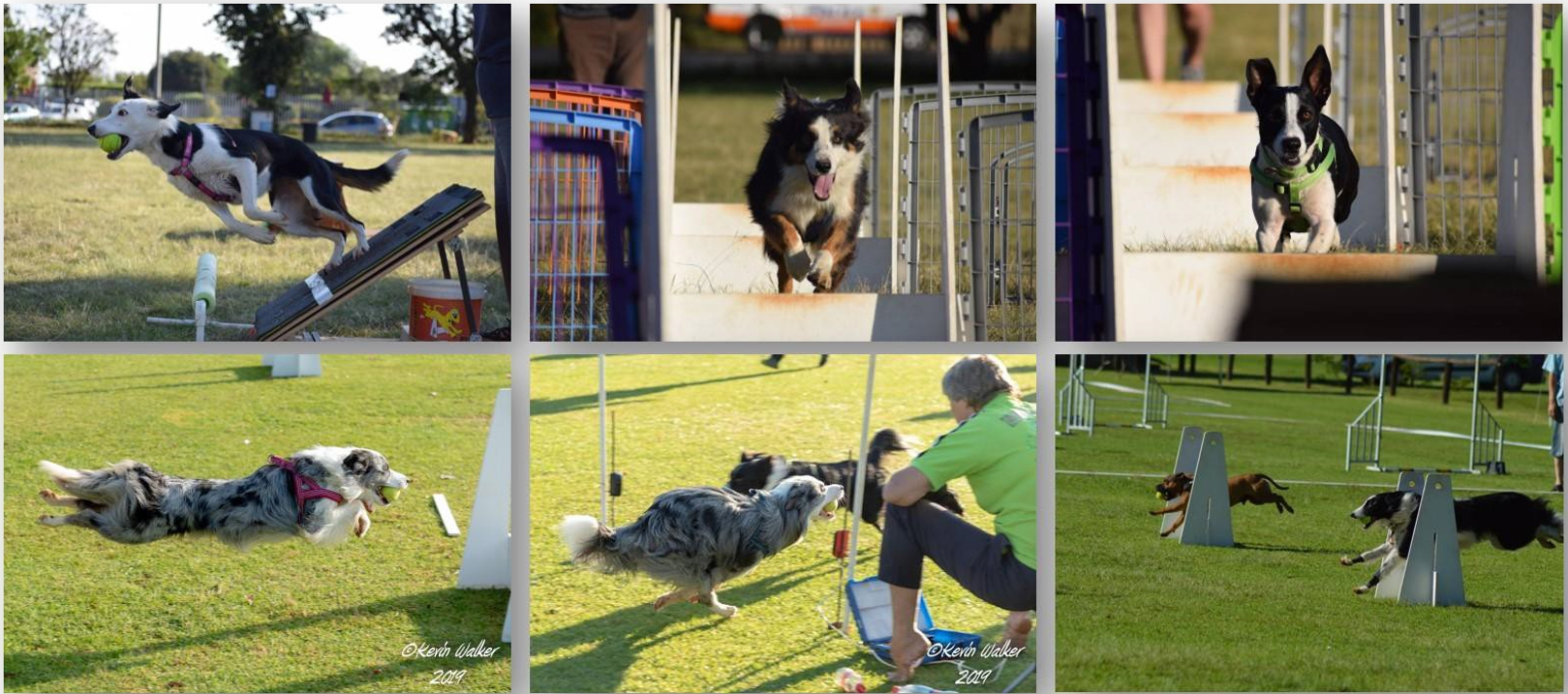What is Flyball?
Flyball is a relay race between two teams, each consisting of four dogs. The first dog in each team is released upon a whistle and must negotiate four hurdles, trigger the flyball box that releases a tennis ball; catch the ball and return over the four hurdles through the start/finish poles. Once the first dog returns, the second dog is released, but may not cross the first dog until that dog’s nose passes the start line. The same applies for dog three and dog four. The aim is to get the dogs to pass as close as possible over the start/finish line – ideally a nose-to-nose cross.
For any infringements such as a dropped ball, missing a hurdle or not triggering the box to release the ball, the dog causing the error must run again.
At club level, dogs are assessed based on individual times. The senior group also run pairs (2 dogs) against one another.
Class criteria:
- Minimum age of the dog: At least 8 months old to start training.
- Your dog must be able to retrieve a tennis ball reliably and return it to you.
- Any breed can participate in flyball – hurdle heights are adjusted to the smallest dog in a team.
- Dogs must be under control off lead and not be aggressive towards people or other dogs.
- Your dog must preferably wear a harness to hold onto before being released. This also prevents pressure on the oesophagus.
- Dogs prone to injury or joint problems should be assessed by a qualified veterinarian or rehabilitation therapist and given the all clear.
- The specialist trainer may conduct a suitability assessment.
What we ask of you:
- Be an enthusiastic handler who is a team player and who can have fun with his/her dog; and encourage your dog to be a happy, energetic working dog!
- Teach a proper box turn (“swimmer’s turn”) as this will not only prevent muscle strains and other injuries, but will ensure a long, happy flyball career for your dog.
- Handlers must be willing to carry out equipment and set up the lanes.
- Handlers must be willing to learn how to box load (the person placing the balls in the box is called a box loader and has to know which dogs in the team turn left or right) and time keep / marshal and attend at least one competition either as an assistant or spectator.
- Take as long as necessary to train your dog to be the best it can be. Getting the dog in the ring as soon as possible is not listed as one of the training goals. Stick to the lessons and do not bypass any of them. Forget obedience commands except “COME”!
Flyball classes:
Beginners
New dogs that have been in Beginners but not yet passed the assessment and/or qualified as assessed by the trainer. On successfully completing the Beginners Flyball class (dog must be able to do a full run over the 4 hurdles, turn and take the ball on the trainer box and return over the hurdles.
Handlers may run with their dogs on the outside of the lane.
Barriers are erected alongside the hurdles to prevent dogs popping out of the flyball lane.
Intermediate
Dogs that have successfully passed Beginners are promoted to the Intermediate class or recreational handlers/dogs who are not interested in running competitions.
Handlers have the choice to run their dogs on the trainer box or the actual flyball box (only if the dog can execute a proper swimmer’s turn) Barriers are erected alongside the hurdles, but reliable dogs may run without these if they will not pop out the lane.
Seniors
(Teams)
Dogs that have successfully passed the Intermediate class.
Dogs must be able to run on the flyball box and in a lane without barriers (training aids may still be used).
Dogs must be able to pass another dog without reacting or chasing it.
Handlers are willing to compete with their dogs and run in a team.


